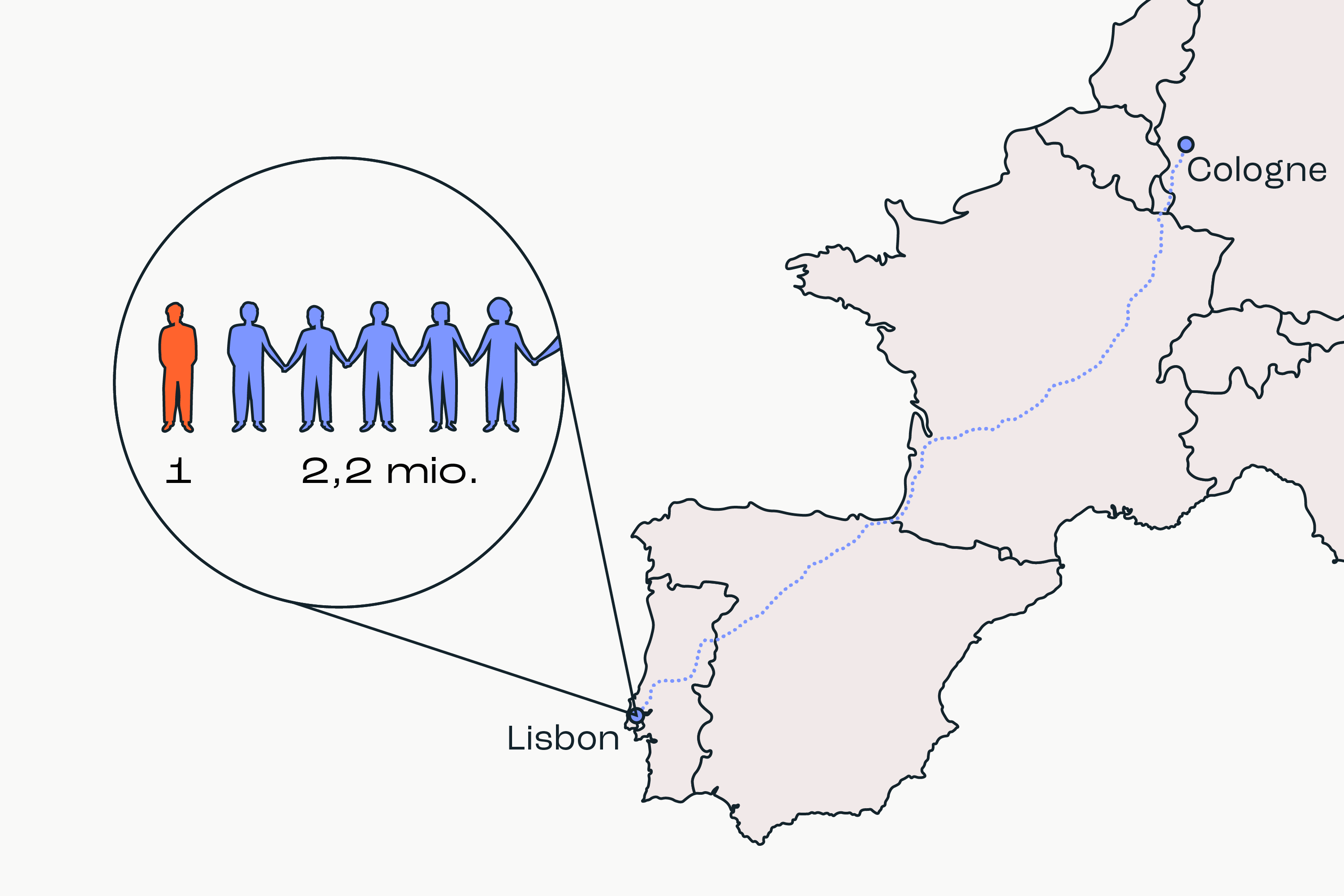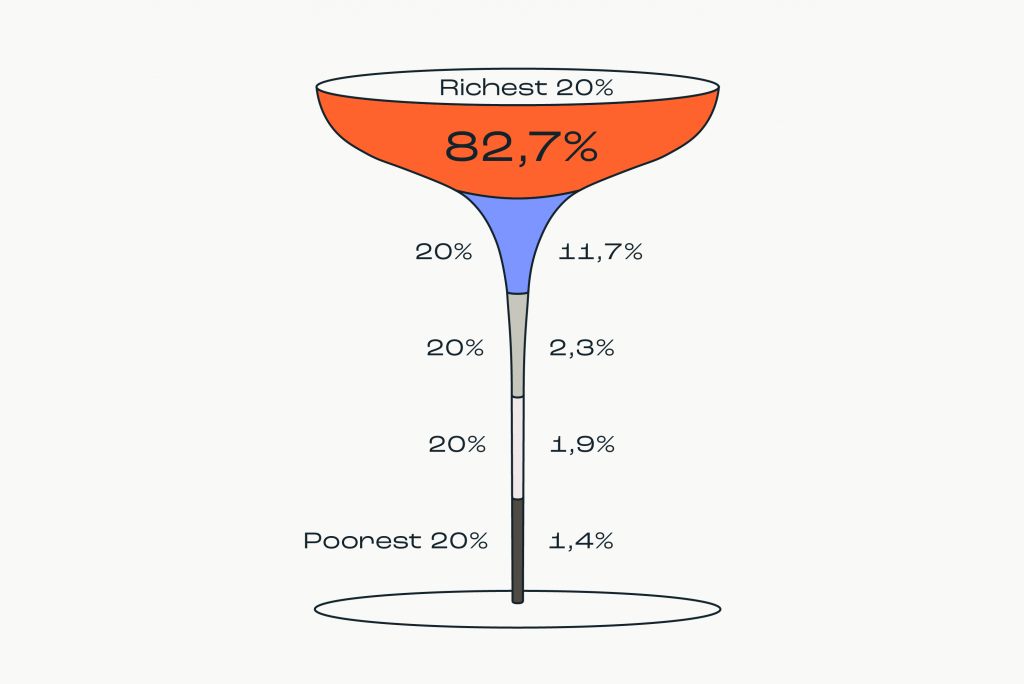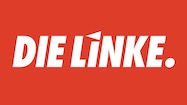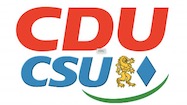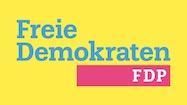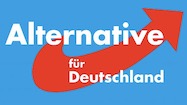Extreme inequality is an extreme problem.
The richest 1 percent of the world´s population owns 43.3 percent of all wealth. | Source: Credit Suisse 2020.
Extreme inequality
is an extreme problem.
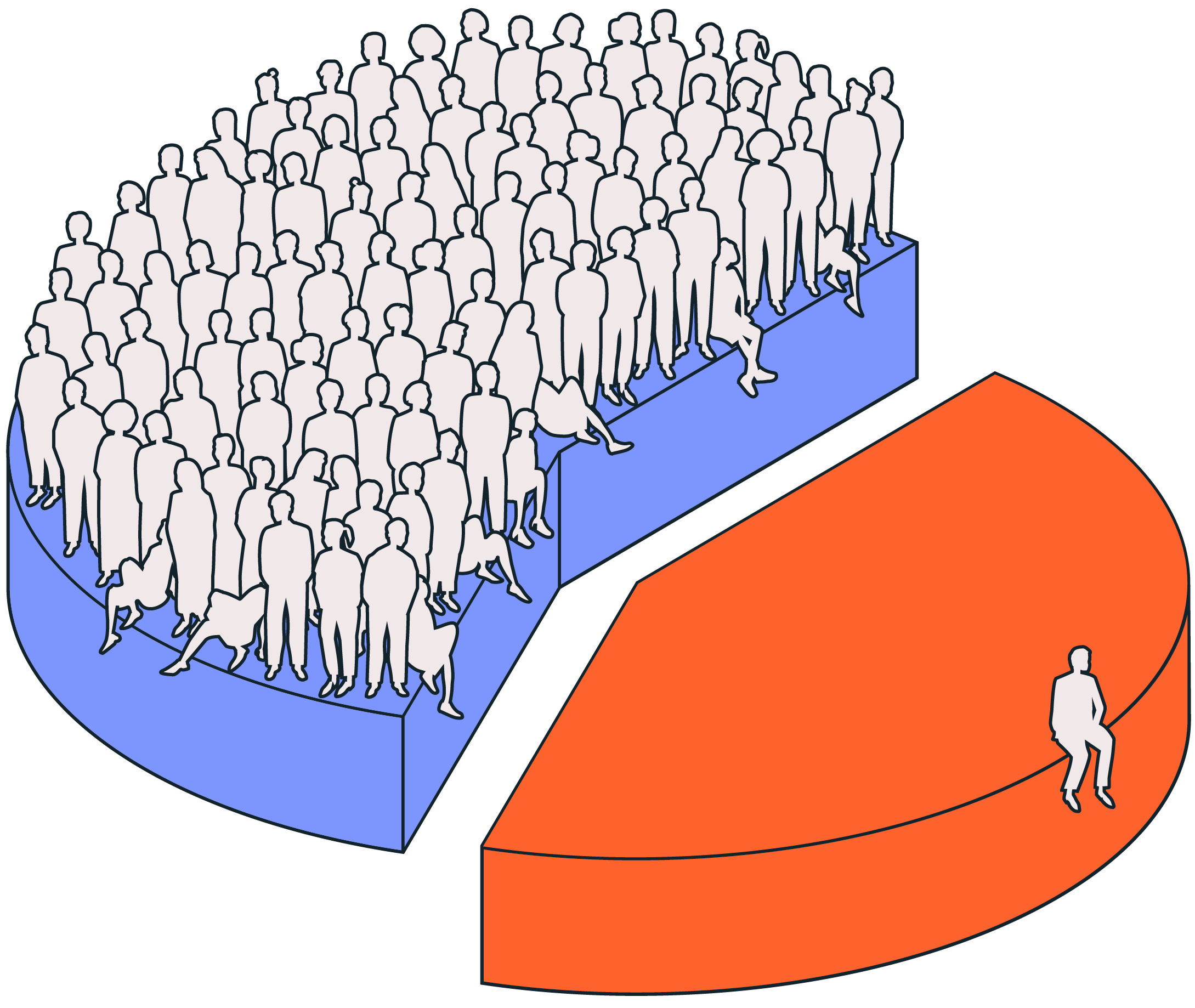
The richest 1 percent of the world´s population owns 44.5 percent of all wealth. | Source: UBS, Global Wealth Report 2023.
Only if we understand growing inequality as a challenge and succeed in conveying knowledge about inequality to everyone, we can tackle the problem and reduce inequality.
Why inequality
Inequality is one of the greatest challenges of our time – the growing trend has the explosive potential to divide our society and damage the economy. Nevertheless, we hardly keep an eye on the problem: the gap between rich and poor is widening, climate inequalities are increasing and forms of discrimination such as racism or sexism are increasing the levels inequality. All these issues are closely intertwined. And they concern us all.
252 men have more wealth than all 1 billion women and girls in Africa and Latin America and the Caribbean, combined. | Source: Oxfam 2022.
Latest
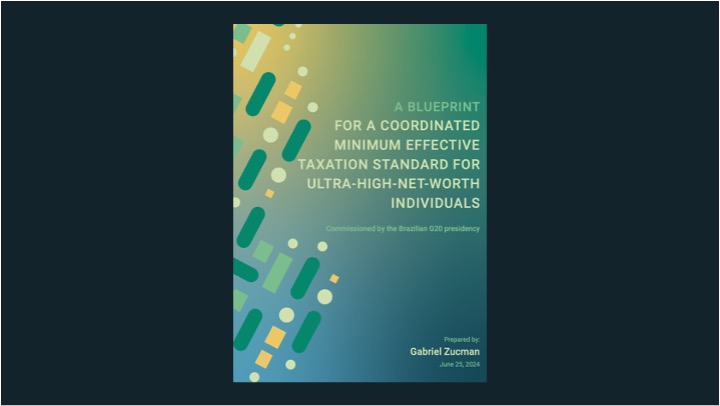
Effective Billionaires-Tax of 2%
25.06.2024 | Gabriel Zucman & EU Tax Observatory | This report presents a proposal for an internationally coordinated standard ensuring an effective taxation of ultra-high-net-worth
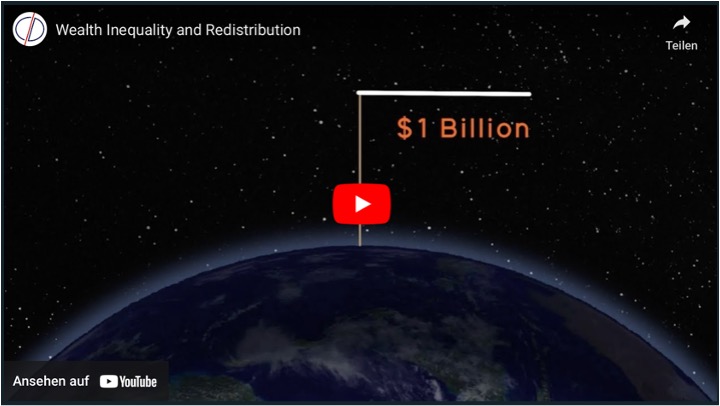
Wealth inequality and Redistribution
01.05.2023 | Stone Center for Inequality Dynamics |The concentration of wealth at the top is higher in the U.S. than in any other rich country.
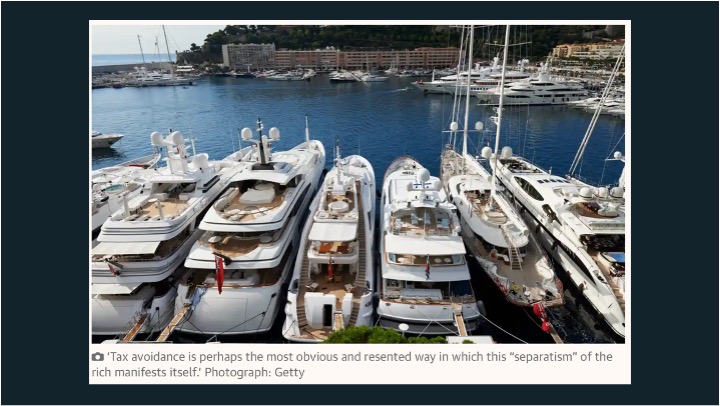
The Guardian view on taxing billionaires: we need to talk about the super-rich
02.06.2024 | Editorial, The Guardian | G20 countries will discuss proposals to make the world’s wealthiest individuals pay more towards funding public goods. The debate
There is not just the one inequality. Inequality has many forms and faces. One way to distinguish inequalities is by 1) economic, vertical inequalities – the gap between rich and poor – and 2) social, horizontal inequalities – such as between men and women, LGBTQIA*, in terms of racism, or in regard to the climate crisis.
Economic inequality
Economic inequality captures the differences between rich and poor. A distinction is usually made between two forms: wealth and income inequality. Wealth includes all goods owned by an individual or household, such as real estate, stocks, cars, and art. Income inequality indicates how unevenly incomes are distributed. Income affects (almost) everyone and can be better measured. But wealth is distributed much more unequally.
Social inequality
We speak of social inequality when people have different life chances due to social and societal reasons. Of course there are “differences”, but the “inequalities” are socially generated. Although nobody should be disadvantaged or preferred because of gender, race, descent, language, homeland or origin, faith or religious views (Article 3 of the Basic Law), the reality is quite different.
Intersectionality
On this page we will (initially) focus on the gap between rich and poor. But it is important to understand that the different forms of inequality are intertwined. The term for this is “intersectionality”. In social inequalities, there is a status that stands above the others, such as class, gender, ethnicity or race. By applying intersectionality to inequality, one can examine both intersections of disadvantage (e.g., female and BIPoC) and intersections of privilege (e.g., male and white).
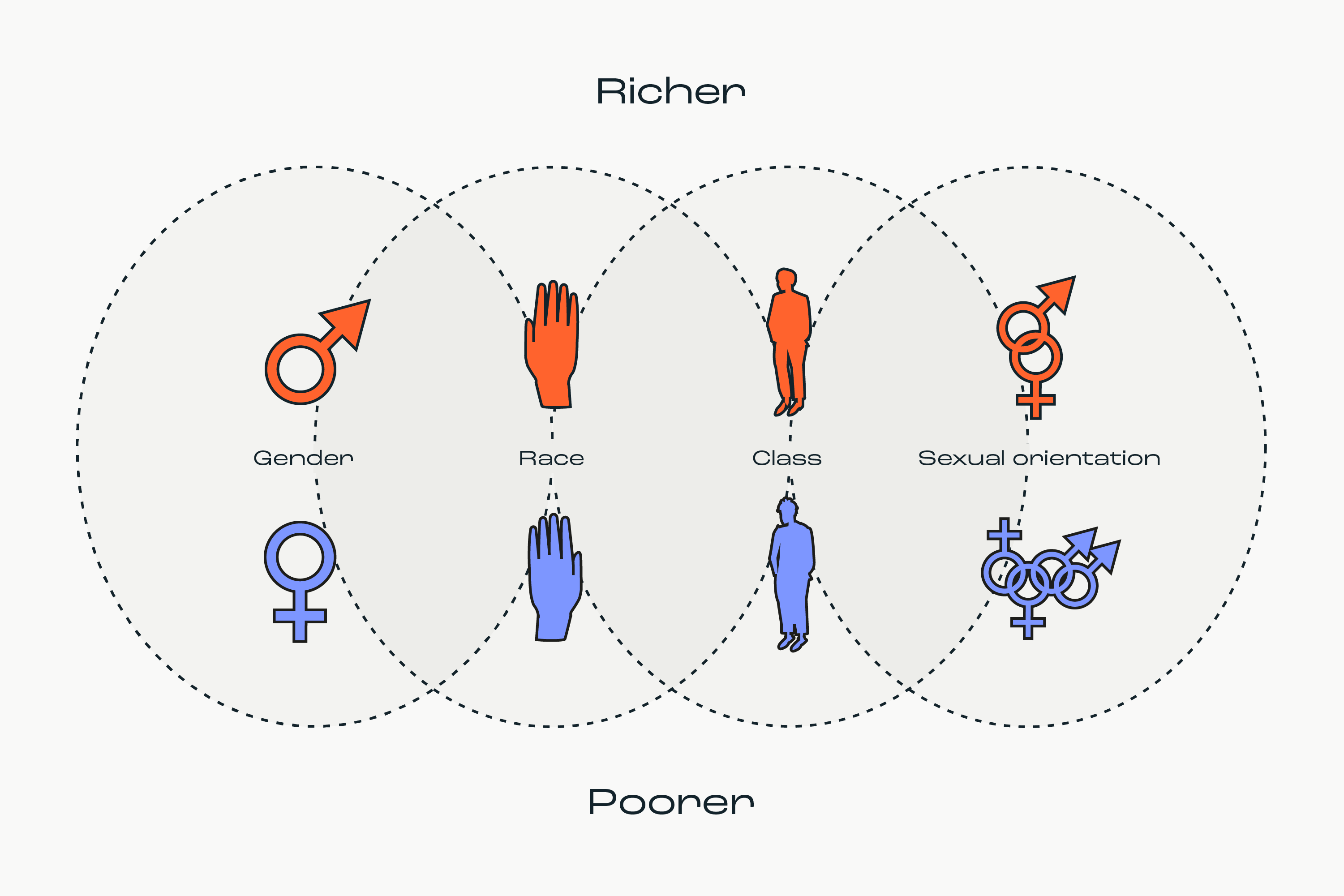
Class and gender relations, ethnicity and race have an impact on how high the average income of the group of people is.
Wealth inequality
Wealth is much more unequally distributed than income in all countries for which we have data. Wealth inequality is so extreme that it is difficult to grasp: According to estimates by the organization Oxfam, 2,153 billionaires worldwide have as much wealth as 60 percent of the world’s population. Imagine to form a human chain with a meter between every single person, from Cologne to Lisbon – and all these people taken together have as much wealth as the one person at the end.
It is about 2,200 km from Cologne to Lisbon. For a human chain with a distance of 1m (between the persons) you would need about 2.2 million people. All these people together have as much wealth as the one person at the end of the chain. | Source: Oxfam 2020; own calculation.
Income inequality
Global income inequality can be compared to the shape of a champagne glass. The richest upper fifth of the world’s population gets four out of five sips – leaving very little for the others. | Source: Eklockwood 2015.
Valuable knowledge
Wealth inequality in Germany
In terms of wealth inequality, Germany is worldwide among the most unequal democracies. In Germany, two families own more wealth than the poorer half of the German population (in 2018 it was 45 persons). The German Institute for Economic Research (in short DIW) has determined that the richest one percent of the population owns more than a third of all wealth. More than half of this wealth was inherited or received as a gift.
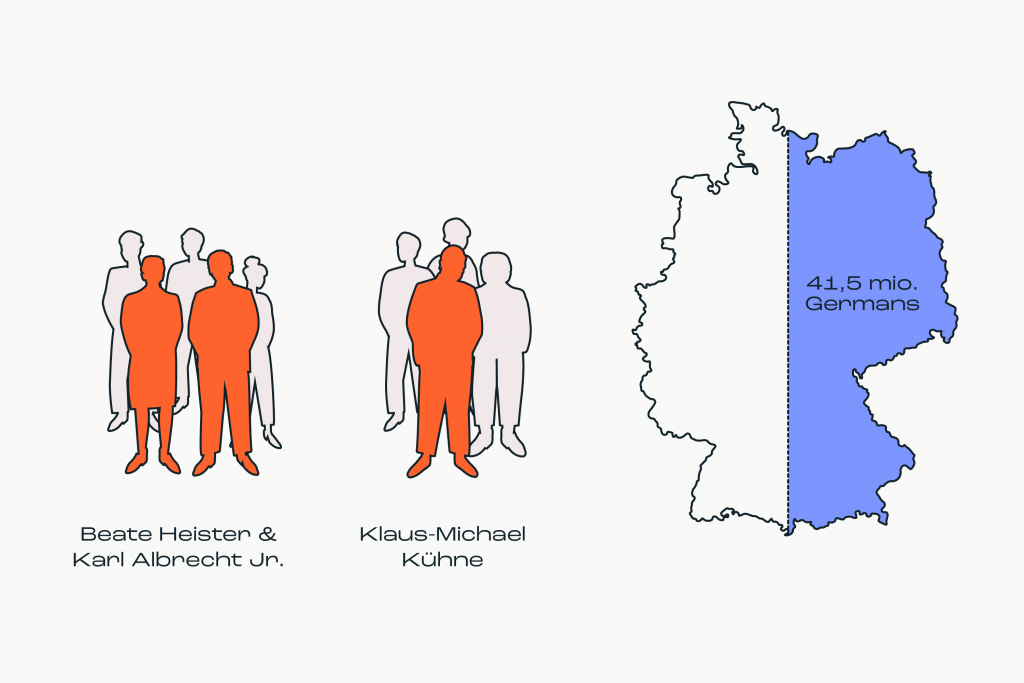
The two richest German families own with 71.6 billion euros more than 41.5 million people. Calculation: Net wealth in private households is 13 trillion euros, of which less than 0.5 percent are owned by the poorer half of the population. | Source: Linartas 2021.
Income inequality in Germany
Before taxes and social benefits are deducted, income inequality in Germany is high in international comparison – comparable to countries like Mexico. Thanks to taxes and social transfers, Germany’s income inequality is in the middle range of industrialized countries. Unfortunately, the income gap has widened in recent decades. Both the groups of poor and rich have grown, while the middle class has shrunk.
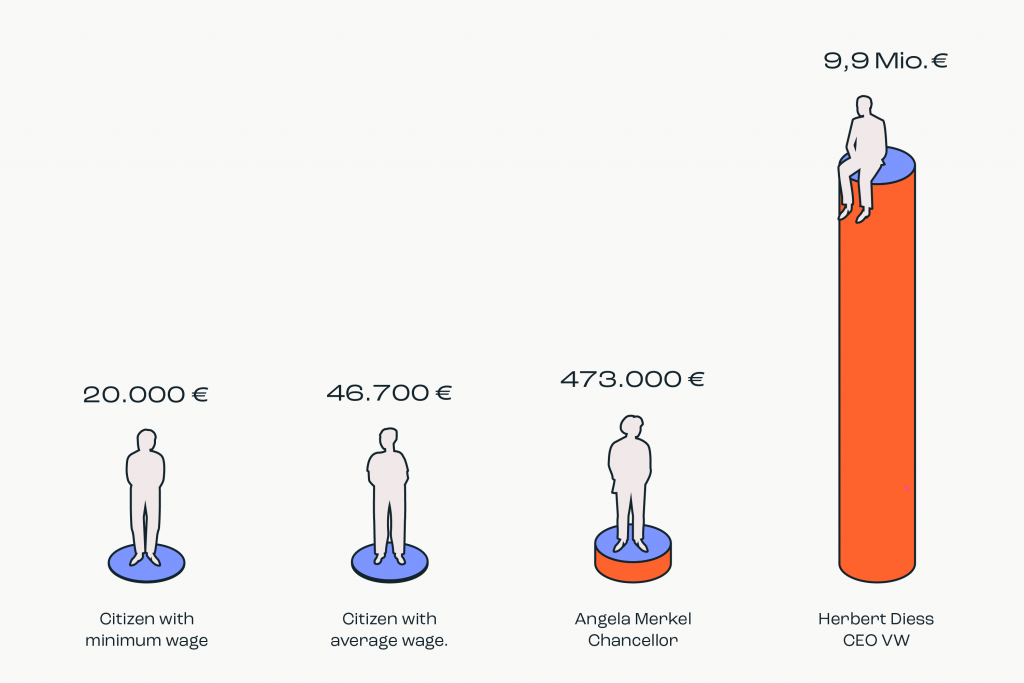
The CEO of VW, Herbert Diess, earned around 9.9 million euros in 2019. For comparison: Angela Merkel received 473,040 euros in the same year, while the average salary of a German was 46,560 euros and a person working full-time with the minimum wage earned 20,000 euros. | Sources: Kewes 2020, Pospiech 2021.


